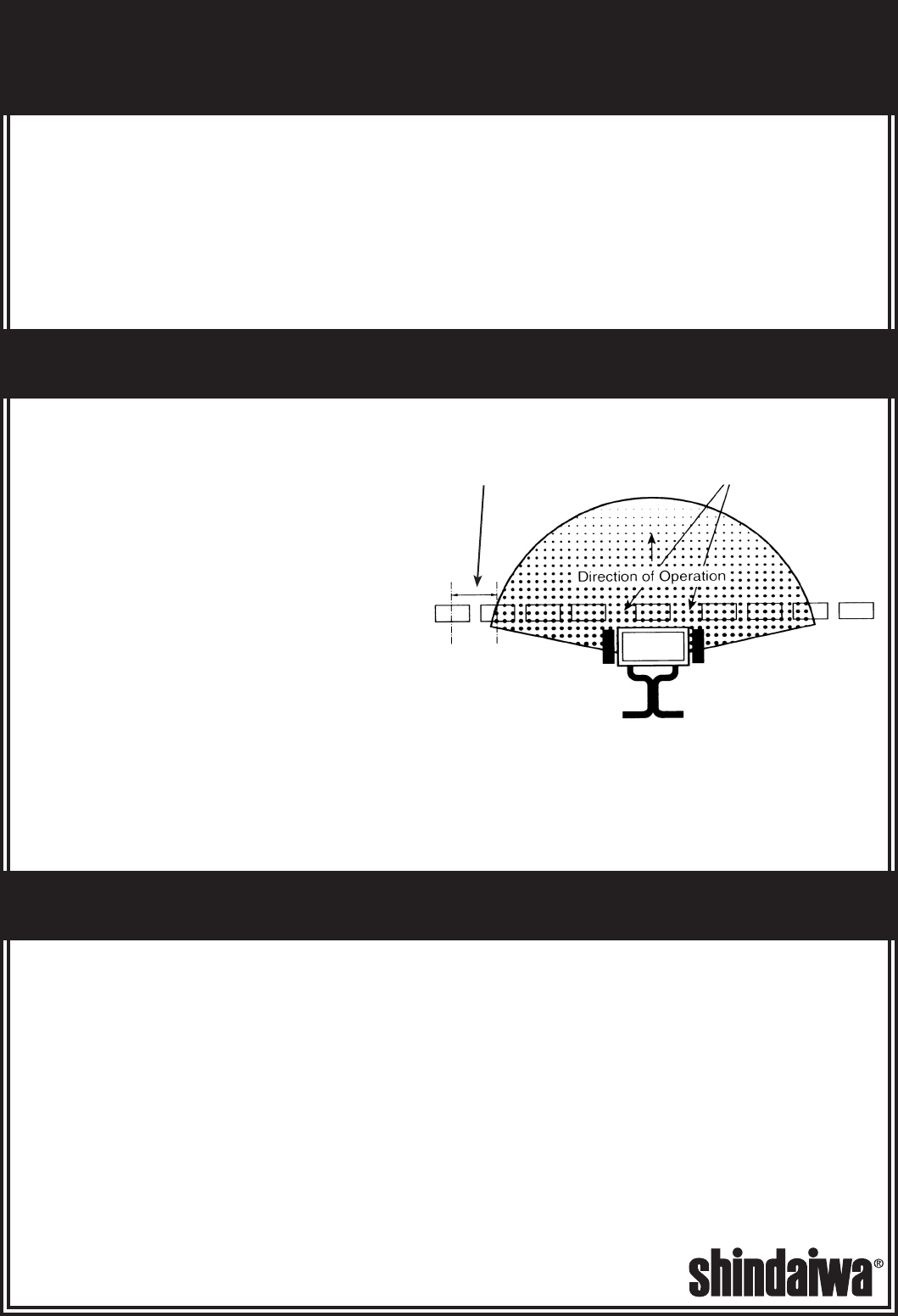
HOW TO DETERMINE SPREADER
SETTINGS AND SPREAD WIDTH
EFFECTIVE PATTERN WIDTH
APPLICATION RATE
Two major factors should be considered when determining correct spreader settings of any
product:
The product application rate, or the amount of material applied per 1,000 1.
square feet.
The effective pattern width, or the actual width in which material is applied. 2.
Label settings are a guide and can be affected by numerous factors.
A simple visual pattern test can be
made by operating the spreader over
a non-turf area and evaluating the pat-
tern. A more accurate method is to
place a row of common, disposable,
aluminum cake pans approximately 1
foot on centers. Set the rate cam at a
middle setting and make 3 or 4 passes
in the same direction as shown. Pour
the material collected from each pan
into individual bottles of the same
size. Set them side by side in order,
and visually inspect their volume. The
effective pattern width is the distance
out from the spreader to a point where
the amount of material is 1/2 the aver-
age amount in the center pans. This
distance is multiplied by 2 to achieve
the total effective pattern width.
Knowing the effective pattern width (for
example, 10 feet), measure a distance
equal to 100 square feet (10’ x 10’ area
covered). Determine the product cover-
age is pounds/ 100 sq. ft. by taking the
weight of the product and dividing it by the
recommended square foot coverage (add
two zeroes to the weight of the bag).
EXAMPLE: Product weight: 25 lbs. sq. ft.
coverage: 5,000 sq. ft. 2500 lbs. - 5,000
sq. ft. = .5 lbs. / 100 sq. ft.
Weigh out between 15 to 20 lbs. of material and
spread over the 100 sq. ft. area. Weigh remain-
ing material left in hopper and adjust rate set-
ting as required. Repeat test until application
rate is correct.
Space Pan 1’0” on Centers
Space for Wheel Track










